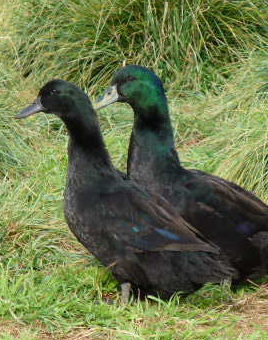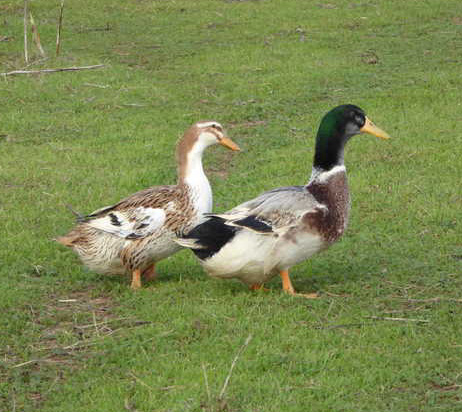Our Current Duck Breeds
Hybrid 300

The Golden 300 Hybrid can be sexed at any age by its color as the males are shades of black and the females are shades of brown. Unfortunately, they do not retain this characteristic in future generations. So if you mate a Golden 300 Hybrid with another Golden 300 Hybrid, their progeny will hatch in blacks, yellows and browns with no relationship between sex and color.
As adults the females range in color from a very light brown to a very dark brown, often with areas of white on them. Males can appear much like a Rouen, or a dull looking Cayuga or with white and dark markings.
Khaki Campbell

Cayuga

Descriptions and photos from: https://www.metzerfarms.com
Silver Appleyard Duck

Some birds were taken to the United States in the 1960s. The breed was added to the Standard of Perfection of the American Poultry Association in 2000. It is listed as "threatened" by the Livestock Conservancy.
https://en.wikipedia.org/wiki/Silver_Appleyard#cite_note-chris-10